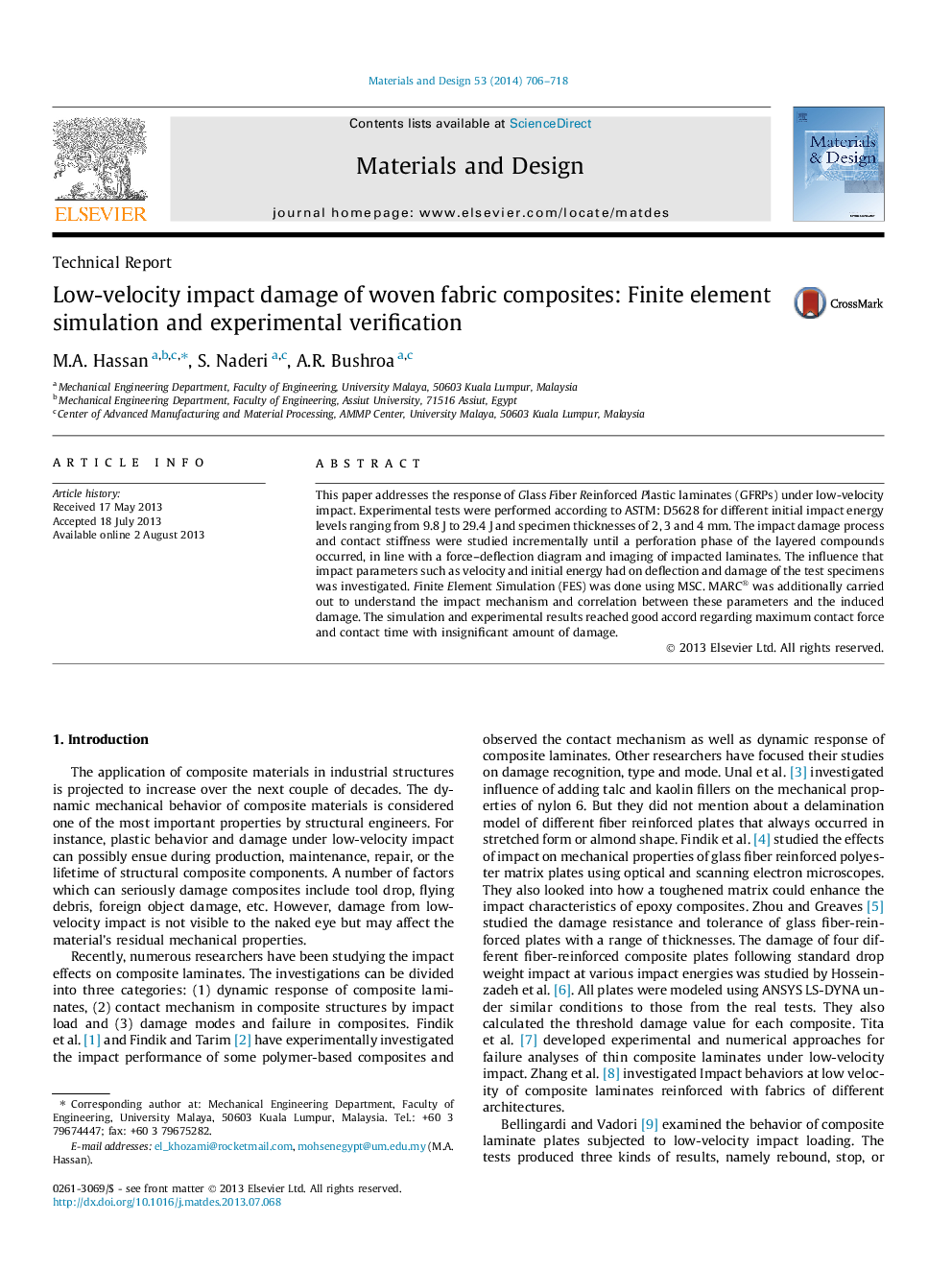| Article ID | Journal | Published Year | Pages | File Type |
|---|---|---|---|---|
| 829792 | Materials & Design (1980-2015) | 2014 | 13 Pages |
•Low-velocity impact test on GFRP with different energy levels and thicknesses.•Using force–deflection curve to determine critical energy for penetration threshold.•Reflection of damage processes to different type of diagrams.•Significant influence of Initial energy and thickness on dynamic response of plates.•Good agreements between experimental and FEM models for the force history data.
This paper addresses the response of Glass Fiber Reinforced Plastic laminates (GFRPs) under low-velocity impact. Experimental tests were performed according to ASTM: D5628 for different initial impact energy levels ranging from 9.8 J to 29.4 J and specimen thicknesses of 2, 3 and 4 mm. The impact damage process and contact stiffness were studied incrementally until a perforation phase of the layered compounds occurred, in line with a force–deflection diagram and imaging of impacted laminates. The influence that impact parameters such as velocity and initial energy had on deflection and damage of the test specimens was investigated. Finite Element Simulation (FES) was done using MSC. MARC® was additionally carried out to understand the impact mechanism and correlation between these parameters and the induced damage. The simulation and experimental results reached good accord regarding maximum contact force and contact time with insignificant amount of damage.
Graphical abstractFigure optionsDownload full-size imageDownload as PowerPoint slide
